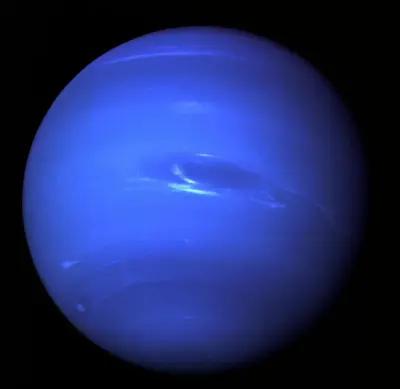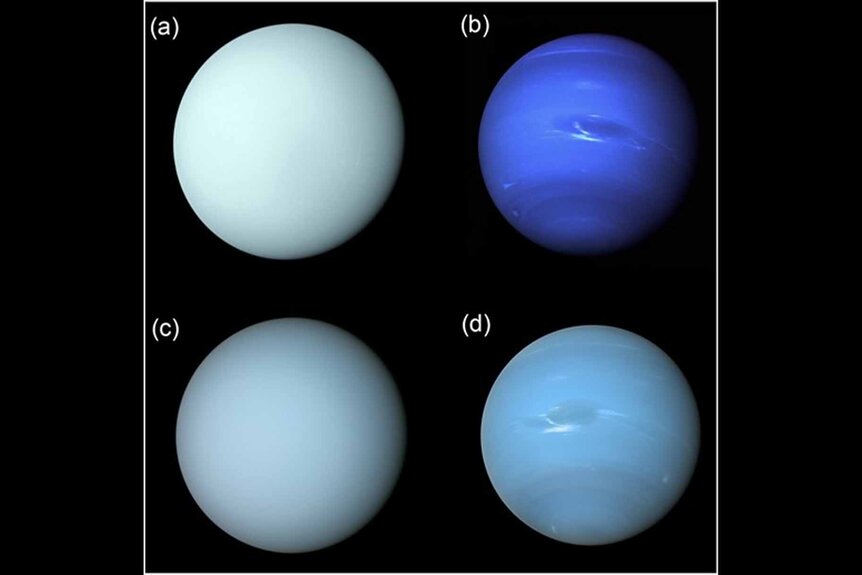When we look at the photographs of the outer planets in our solar system, the planet Neptune stands out because of it’s striking blue color as shown in the photos taken by Voyager 2 back in 1989. (See below)

Photo of Neptune as taken by Voyager 2
In a new study just published in the Monthly Notices of the Royal Astronomical Society, researchers found that the color balance in Voyager was a little skewed that led to the planet appearing more blue than it actually is. Basically due to the way the images from Voyager were contrast enhanced to accentuate fainter features and better illustrate the atmospheric features of the planet the image released was bluer than what the planet actually looked like. They used observations of the planet taken from 1950 to 2016 along with data from the Hubble Space Telescope and the Very Large Telescope to create a more accurate representation of the planet’s color which is closer Uranus’s color than the vivid blue we are used to seeing. (See below)

Panels a and b show early images of the visible appearance of Uranus and Neptune reconstructed from Voyager 2 ISS images in 1986 and 1989, respectively, showing Uranus to be pale blue-green, and Neptune dark blue (PIA18182 and PIA01492, credit: NASA/JPL-Caltech).
Panels c and d show more recent reconstructions of the true colours of these planets, showing them to be more similarly coloured (credit: NASA/JPL-Caltech/Björn Jónsson)
From the Paper:
We present a quantitative analysis of the seasonal record of Uranus’s disc-averaged colour and photometric magnitude in Strömgren b and y filters (centred at 467 and 551 nm, respectively), recorded at the Lowell Observatory from 1950 to 2016, and supplemented with HST/WFC3 observations from 2016 to 2022. We find that the seasonal variations of magnitude can be explained by the lower abundance of methane at polar latitudes combined with a time-dependent increase of the reflectivity of the aerosol particles in layer near the methane condensation level at 1 – 2 bar. This increase in reflectivity is consistent with the addition of conservatively scattering particles to this layer, for which the modelled background haze particles are strongly absorbing at both blue and red wavelengths. We suggest that this additional component may come from a higher proportion of methane ice particles. We suggest that the increase in reflectivity of Uranus in both filters between the equinoxes in 1966 and 2007, noted by previous authors, might be related to Uranus’s distance from the Sun and the production rate of dark photochemical haze products. Finally, we find that although the visible colour of Uranus is less blue than Neptune, due to the increased aerosol thickness on Uranus, and this difference is greatest at Uranus’s solstices, it is much less significant than is commonly believed due to a long-standing misperception of Neptune’s ‘true’ colour. We describe how filter-imaging observations, such as those from Voyager-2/ISS and HST/WFC3, should be processed to yield accurate true colour representations.
It is facinating how much more there is to learn in the cosmos even about our own stellar neighbors never mind the whole wide universe out there with its infinite mysteries and grandeur.
Source: Neptune is more of a greenish blue than is commonly depicted
– Suramya